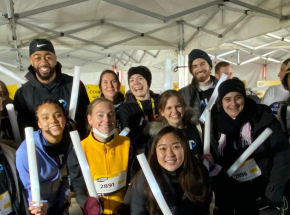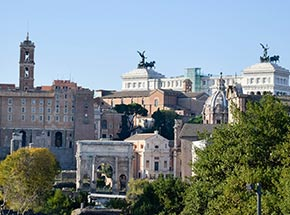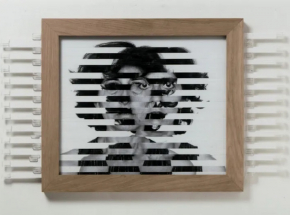- About AUP
- History of AUP
- Mission & Core Values
- Vision and Leadership
- AUP Recognition
- Alumni Success
- Campus Development
- Arts at AUP
- Policies & Guidelines
- Academics
- Undergraduate
- Graduate Programs
- MA in Diplomacy and International Law
- MA in Global Communications
- MSc in Human Rights and Data Science
- MA in International Affairs
- MA in International Affairs, Conflict Resolution, and Civil Society Development
- MSc in International Management
- MSc in Strategic Brand Management
- Find Your Thesis Advisor
- Previous Programs
- Cultural Program
- Faculty
- Summer School
- Research Centers
- The Center for Critical Democracy Studies
- Upcoming Events
- Research Projects
- Fellows’ Publications
- Publishing
- Curriculum
- Community
- Visiting Scholars
- CCDS Highlights
- Atelier de Théorie Politique – Paris
- Critical Theory 101: Future Directions and New Challenges
- Martti Koskenniemi on “The Law of International Society: A Road not Taken”
- Academic Freedom Symposium
- Tocqueville Colloque 2023
- Violent Turns Conference
- Degenerations of Democracy
- DEMOS21 Inaugural Event
- What Demos for the 21st Century?
- The Paris Centennial Conference
- Justice Stephen Breyer
- Civic Jazz - The Launch of the Center
- Past Events
- FR
- The Center for Writers and Translators
- The George and Irina Schaeffer Center for the Study of Genocide, Human Rights and Conflict Prevention
- The Joy and Edward Frieman Environmental Science Center
- The Center for Media, Communication & Global Change
- The Center for Critical Democracy Studies
- Departments
- Academic Resources
- Academic Affairs
- Academic Calendar
- Academic Resource Center
- Library
- Registrar's Office
- Teaching and Learning Center
- Employer Network
- Accessibility & Accommodation Services
- AI@AUP: A Campus-Level Initiative
- Quai D'Orsay Learning Commons
- Paris as Classroom
- ACE Center
- Admissions
- Student Life
- Campus
- Student Leadership & Involvement
- Paris
- Support Services
- Student Development Help Desk
- Student Accounting Services
- Student Immigration Services
- Student Grievance Procedure
- Diversity and Inclusion
- Health & Well-being
- Digital Student Handbook
- News
- Events
- AUP Giving
- Housing Offer for 2025-2026
- IT Services
- Alumni
- About AUP
- History of AUP
- Mission & Core Values
- Vision and Leadership
- AUP Recognition
- Alumni Success
- Campus Development
- Arts at AUP
- Policies & Guidelines
- Academics
- Undergraduate
- Graduate Programs
- MA in Diplomacy and International Law
- MA in Global Communications
- MSc in Human Rights and Data Science
- MA in International Affairs
- MA in International Affairs, Conflict Resolution, and Civil Society Development
- MSc in International Management
- MSc in Strategic Brand Management
- Find Your Thesis Advisor
- Previous Programs
- Cultural Program
- Faculty
- Summer School
- Research Centers
- The Center for Critical Democracy Studies
- Upcoming Events
- Research Projects
- Fellows’ Publications
- Publishing
- Curriculum
- Community
- Visiting Scholars
- CCDS Highlights
- Atelier de Théorie Politique – Paris
- Critical Theory 101: Future Directions and New Challenges
- Martti Koskenniemi on “The Law of International Society: A Road not Taken”
- Academic Freedom Symposium
- Tocqueville Colloque 2023
- Violent Turns Conference
- Degenerations of Democracy
- DEMOS21 Inaugural Event
- What Demos for the 21st Century?
- The Paris Centennial Conference
- Justice Stephen Breyer
- Civic Jazz - The Launch of the Center
- Past Events
- FR
- The Center for Writers and Translators
- The George and Irina Schaeffer Center for the Study of Genocide, Human Rights and Conflict Prevention
- The Joy and Edward Frieman Environmental Science Center
- The Center for Media, Communication & Global Change
- The Center for Critical Democracy Studies
- Departments
- Academic Resources
- Academic Affairs
- Academic Calendar
- Academic Resource Center
- Library
- Registrar's Office
- Teaching and Learning Center
- Employer Network
- Accessibility & Accommodation Services
- AI@AUP: A Campus-Level Initiative
- Quai D'Orsay Learning Commons
- Paris as Classroom
- ACE Center
- Admissions
- Student Life
- Campus
- Student Leadership & Involvement
- Paris
- Support Services
- Student Development Help Desk
- Student Accounting Services
- Student Immigration Services
- Student Grievance Procedure
- Diversity and Inclusion
- Health & Well-being
- Digital Student Handbook
- News
- Events
- AUP Giving
- Housing Offer for 2025-2026
- IT Services
- Alumni
Faculty
Professor Vanel
Art History and Fine Arts
What inspired you to come to AUP?
During my AUP interview, I met with colleagues and students, and immediately felt that I would be able to express myself freely and fully while teaching here. Then, of course, teaching Art History in Paris offers unparalleled opportunities. It’s not hard to understand why Manet was so controversial when you see Le Déjeuner sur l'herbe or Olympia alongside contemporary Academic paintings. I’m still thinking about how to use what Paris has to offer, beyond its museums, and I’d like students to think critically about the ways in which museums present their collections and display their art. To some extent, the Louvre has become an airport and the Pompidou Center, as it is now, has lost sight of its original mission to be an open cultural center. Being critical doesn’t mean being negative, just aware.
What is it about Pop Art that interests you?
It’s less Pop Art and more the counterculture of the 1960s that interests me. Not just in terms of art but also society at large: civil rights movements, the sexual revolution, mind-expanding experiments, the rise of anti-war, anti-establishment protests, and the general eagerness to find alternative modes of living. The arts were just one small, but very active agent of change. Since then, it seems to me that there have been more attempts to bury this heritage rather than nurture it, which is another reason to care for it without being naïve about it.
What first piqued your interest in Muzak, so much so that you wrote an entire book about it?
These kinds of industrially produced, cheesy musical arrangements have a bad reputation, which was already interesting. But what really intrigued me was that this kind of ambient music wasn’t meant to be listened to. The experimental composer, John Cage, had a peculiar relationship with Muzak, in that, he hated the product but was fascinated with the concept. Furthermore, he worshipped Erik Satie who, in the early 1920s, had written a few pieces of what he [Satie] called “furniture music” [musique d’ameublement]. So from Satie to Cage to Brian Eno, I could see that there was a missing link between a despised commercial product and the avant-garde concept of a kind of music that can be both inconspicuous and present. I was interested in this tension: how could one of the worst products of our consumer society cross paths with avant-garde artists?
What factors determine how you will curate an exhibit?
I don’t claim to be a professional curator. I curated the Andy Warhol exhibition that took place in 2015-2016 because I was invited to do so by the Musée d'Art Moderne de la Ville de Paris. That was a daunting task, especially because of the difficulties involved in obtaining Warhol’s artwork. I looked at the exhibition itself as the kind of medium that he would have toyed with and was inspired by the way that Warhol exhibited his work in the 1960s. As such, the exhibition forces the viewer into an active role. The way I curate also depends on the artwork being shown: some collections are meant for contemplation, while others challenge a traditional contemplative attitude.
Will you keep collaborating with AUP students on future projects, as you did with the Warhol exhibit? And what have you learned from AUP students in past collaborations?
Of course. A group of students translated into English the wall-texts in Paula Modersohn-Becker’s exhibition, which was at the Musée d'Art Moderne de la Ville de Paris. It may sound like a small project, but it was tremendously important, since thousands of people attended the exhibit and read the texts. It was a great experience and I think the curator was pleased with the results. This summer, I will work again with a graduating AUP student on the English translation of a text I wrote in French on Robert Rauschenberg. I don’t like to separate my teaching from the work I do outside of the classroom and I’d like my students to see that the best relationships between life and work usually come about when your work feels like pleasure. What I’ve learned from AUP students in these moments is the very meaning of collaboration.
Related
-

Course des Lumières
Paris as Classroom
Read MoreCourse des Lumières
Paris as Classroom
Participants are provided with a light-up baton to carry throughout, symbolizing the movement’s aim of “lighting up the night against cancer.”
-

Rome
Study Trip
Read MoreRome
Study Trip
Dig beneath the rich layers of history or explore concepts in photography and drawing that make Rome a modern-day wonder.
-

Lucia's Thesis
Student Work
Read MoreLucia's Thesis
Student Work
For Lucia Sendagorta the choice of Capstone project was an opportunity to explore art from outside a French or American perspective.
